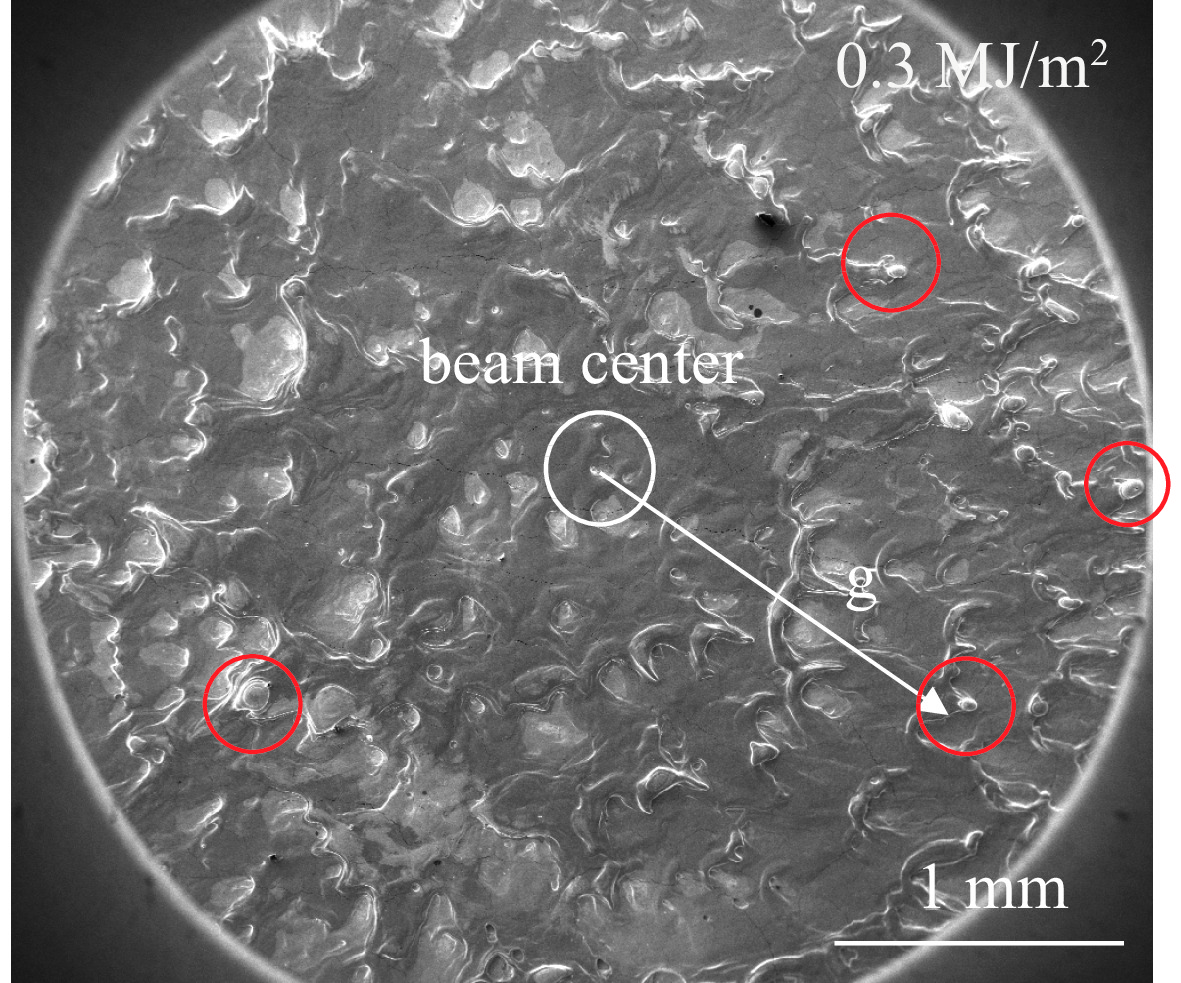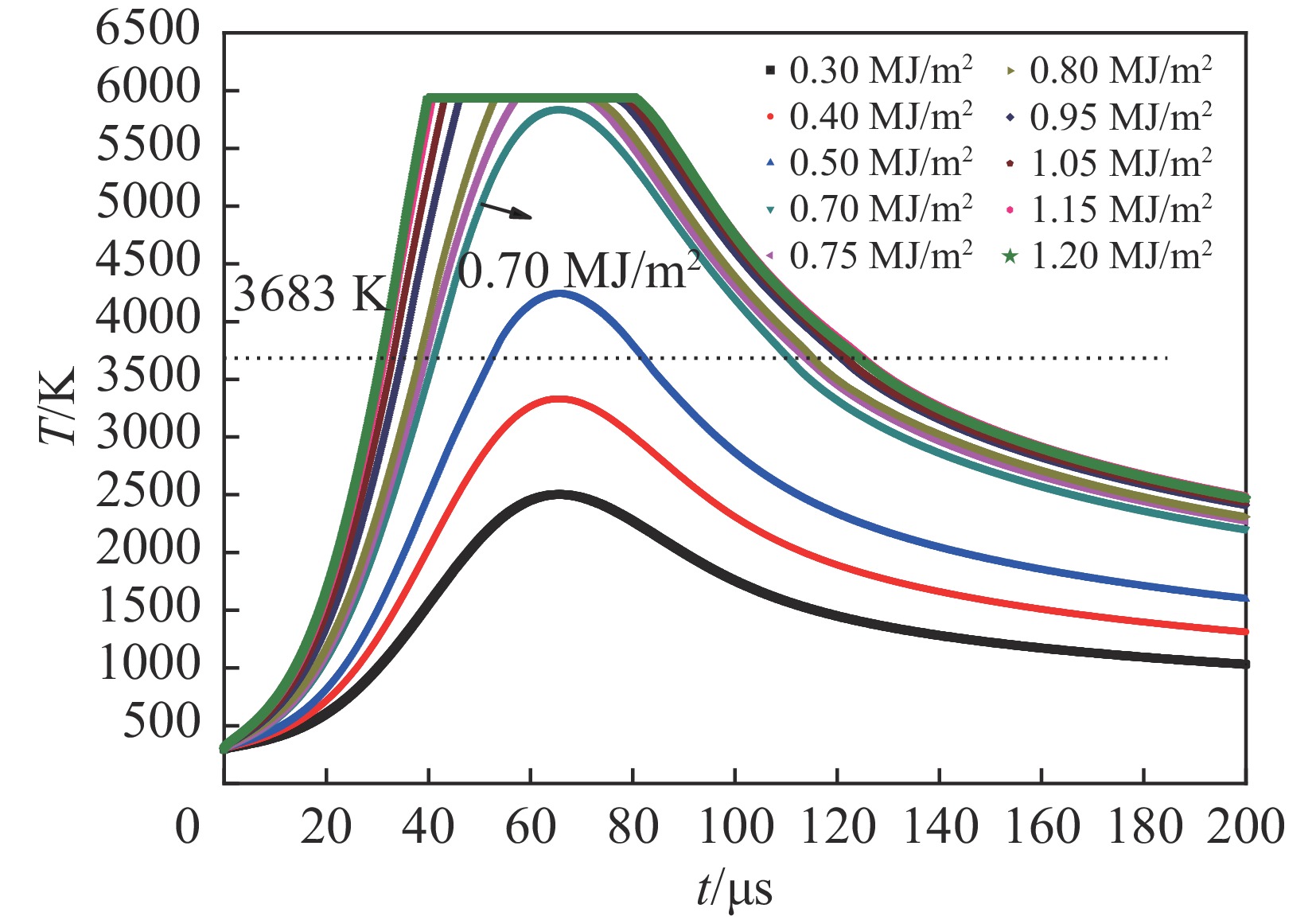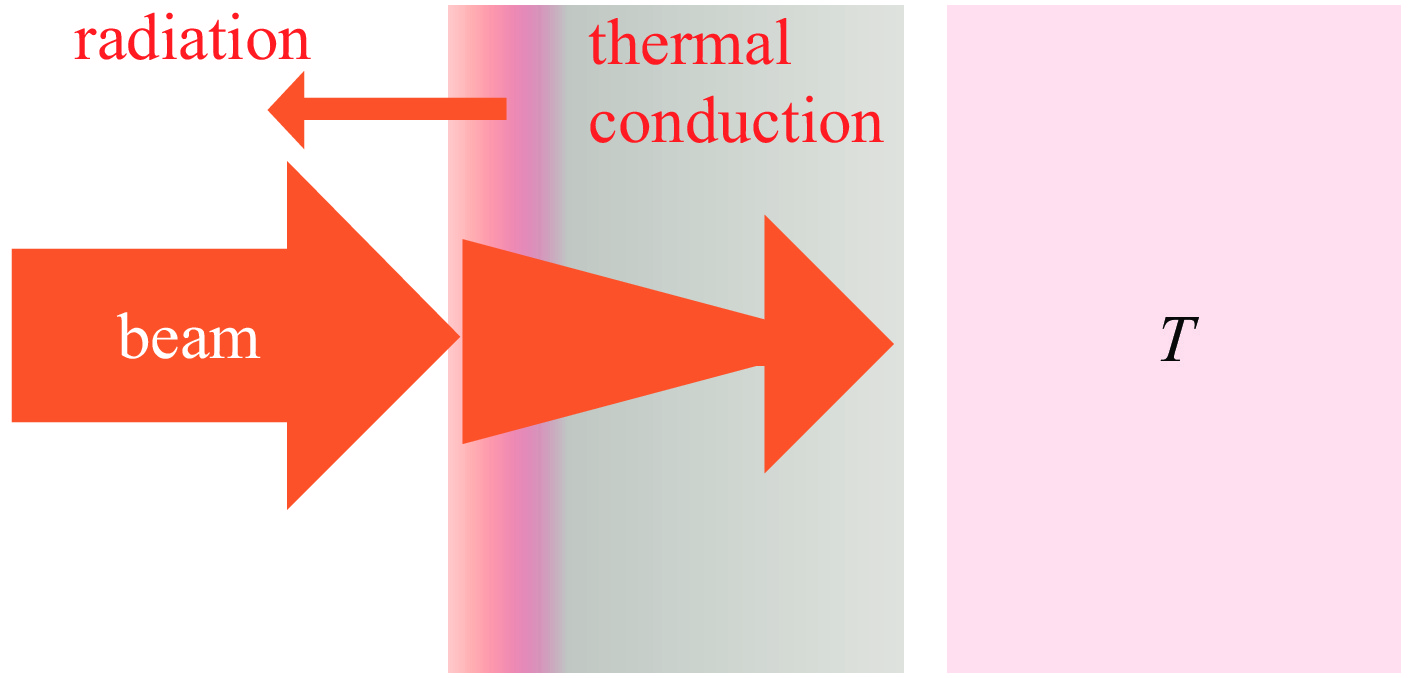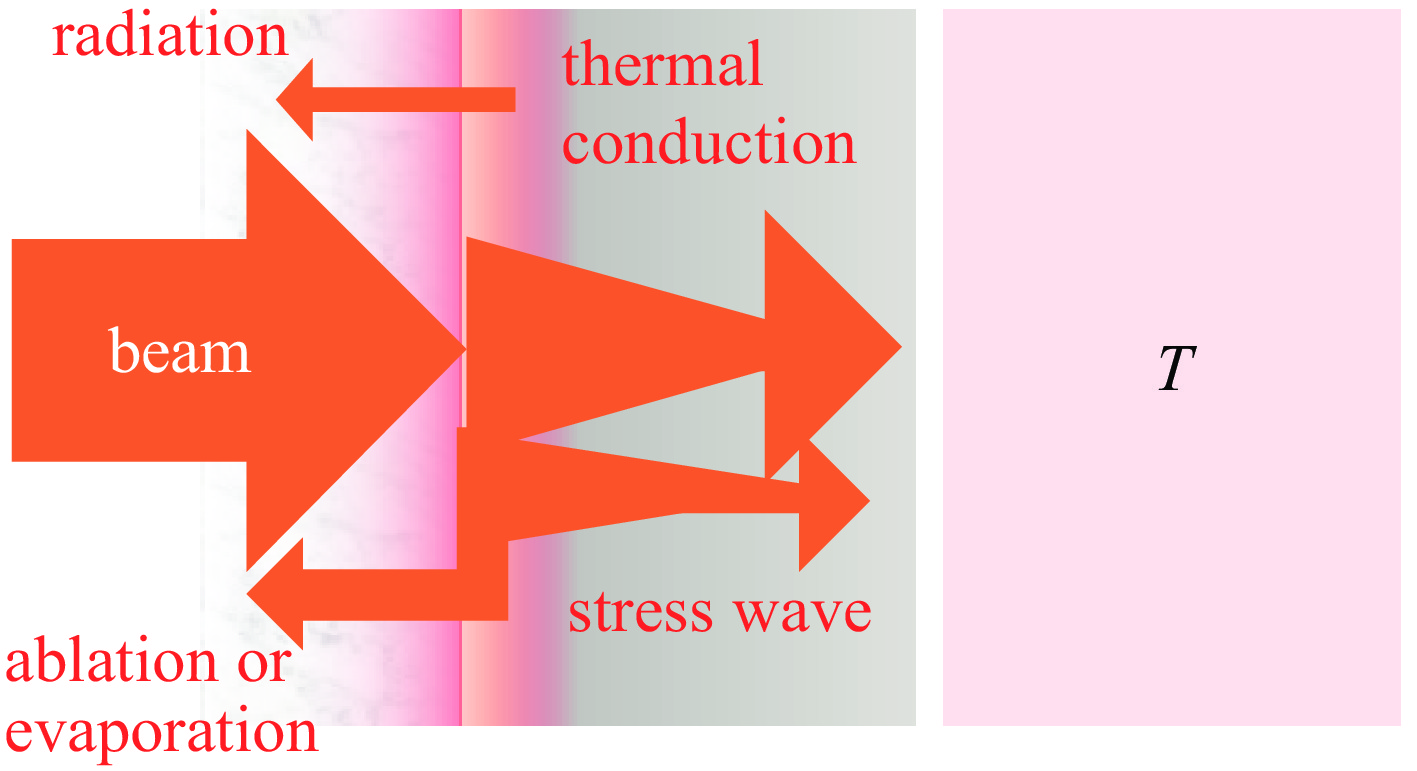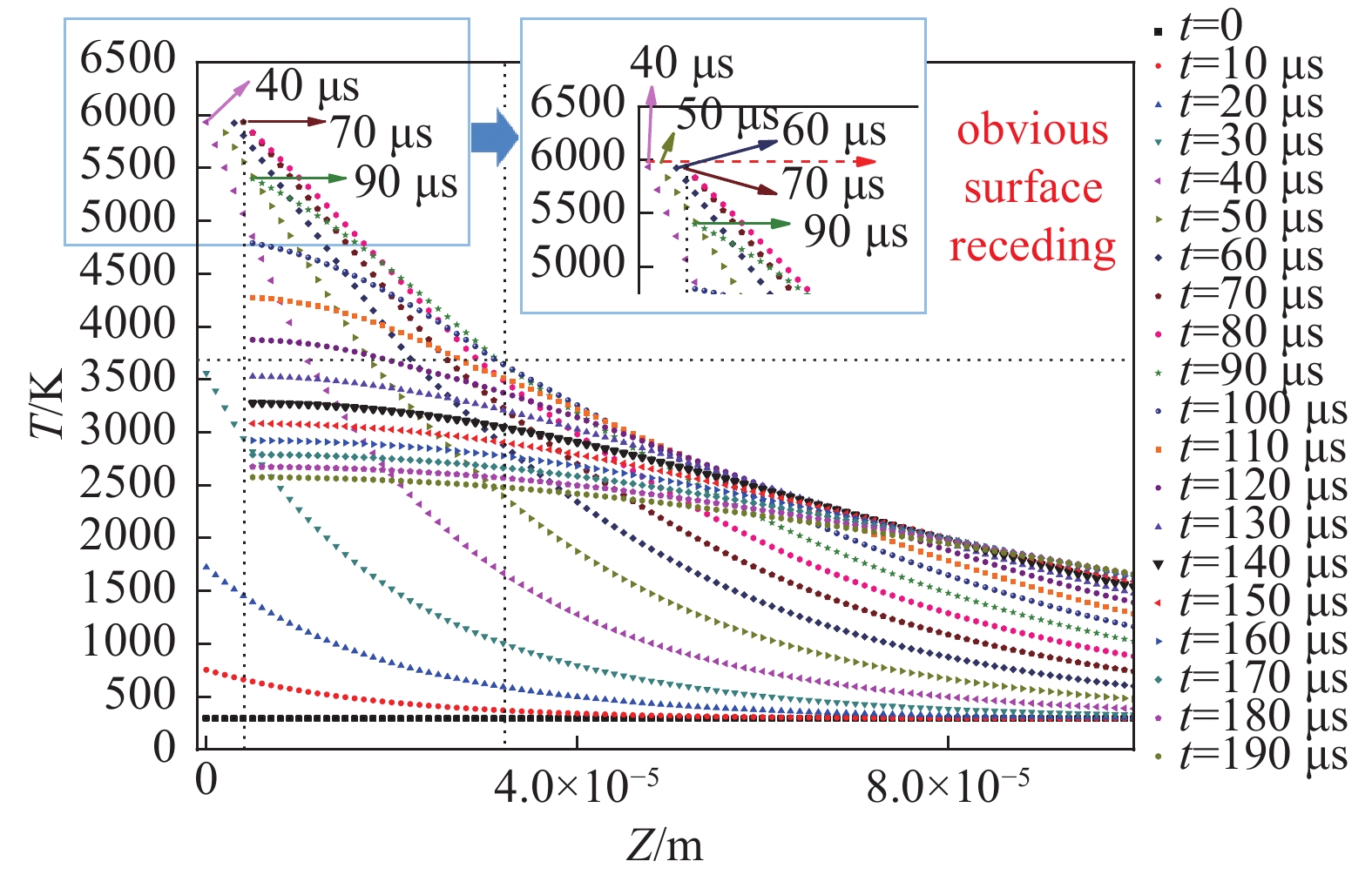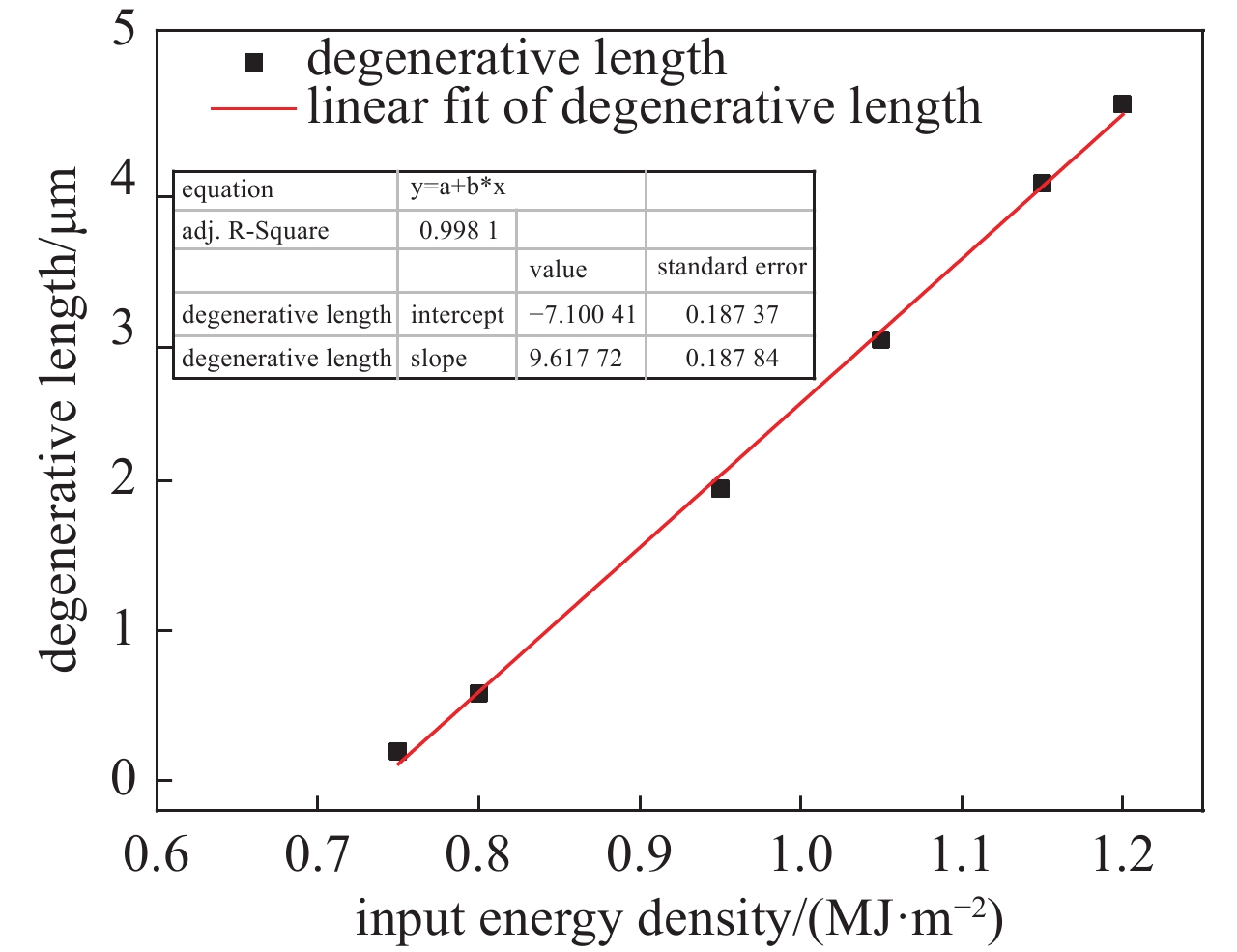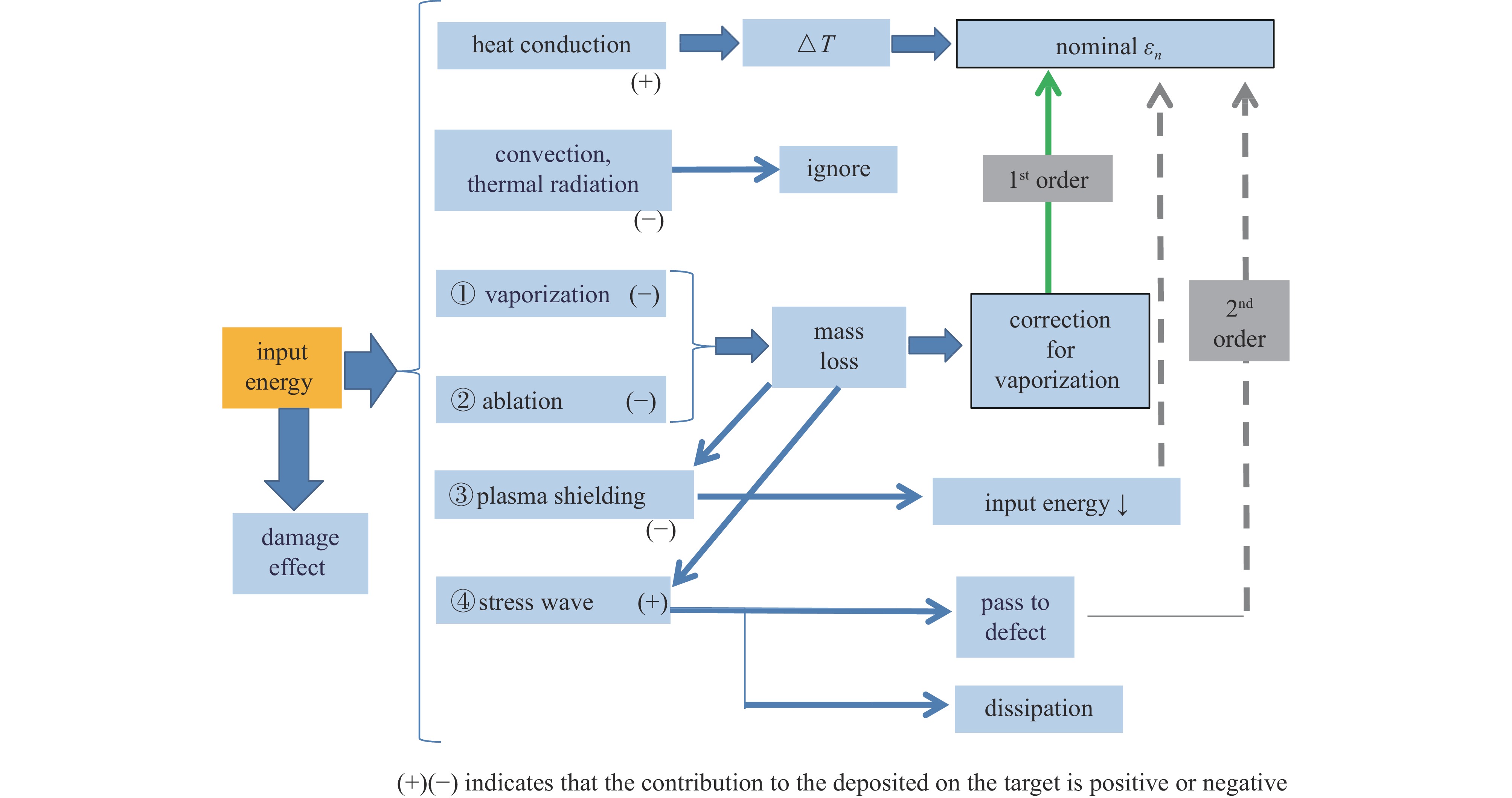Correction method for pulse energy density of compression plasma flows
-
摘要: 介绍了压缩等离子体流能量密度诊断存在的问题,基于能量的耗散走向分析及热传导计算模型,针对汽化过程对诊断带来的误差,给出了一种基于测量的质量损失,通过表面退行的有限元计算反推损失相同质量所需输入能量的能量密度修正方法,并对能量密度修正进行了评估,通过此方法得到的修正能量密度与实验结果相吻合,但要获得更准确的能量密度,还需针对屏蔽等离子体、反冲应力波等因素进行能量密度修正,或开发出更准确的能量密度诊断方法。Abstract: The problems of energy density diagnosis of compression plasma flows are introduced in this paper. Based on the energy dissipation analysis and the heat conduction calculation model, aiming at the errors caused by vaporization, an energy density correction method based on measured mass loss is proposed, and the input energies required to lose the same mass are deduced through the finite element calculation of surface receding. The energy density correction is evaluated, and the corrected energy density obtained by this method is in good agreement with the experimental results. However, to obtain more accurate energy density, it is necessary to correct the energy density for shielded plasma and recoil stress wave or develop a more accurate energy density diagnosis method.
-
图 7 钨的热导率随温度的变化[17]
Figure 7. Temperature dependence of thermal conductivity of W
表 1 钨材料的参数
Table 1. Parameters of tungsten materials
parameter value specific heat capacity of solid state/(J·kg−1·K−1) 144 specific heat capacity of liquid state/(J·kg−1·K−1) 200 solid density/(kg·m−3) 19 350 liquid density/(kg·m−3) 17 600 thermal conductivity/(W·m−1·K−1) variation with temperature melting point Tm/K 3 683.15 boiling point Tb/K 5 933.15 latent Heat LS-L/(kJ·kg−1) 187 latent Heat LL-G/(kJ·kg−1) 4 009 表 2 计算模拟得到的不同输入能量密度下的表面退行量
Table 2. Calculated surface degeneration under different input energy densities
$ \varepsilon $/(MJ/m2) $ \Delta x $/μm 0.70 0.00 0.75 0.19 0.80 0.58 0.95 1.94 1.00 2.52 1.05 2.94 1.15 3.98 1.20 4.51 表 3 实验中质量损失所对应的表面退行量
Table 3. Surface degeneration corresponding to mass loss in the experiment
$ {\varepsilon _n} $/(MJ/m2) $ \Delta m $/mg $ \Delta x' $/μm 0.30 2.80 1.28 0.40 4.45 2.04 0.50 6.10 2.80 0.95 13.54 6.20 1.00 14.36 6.58 1.05 15.19 6.96 1.15 16.84 7.72 1.20 17.67 8.10 表 4 名义平均能量密度的修正结果
Table 4. Correction results of nominal average energy densities
$ {\varepsilon _n} $/(MJ/m2) $ \varepsilon $/(MJ/m2) 0.3 0.87 0.4 0.95 0.5 1.03 0.95 1.39 1.05 1.46 1.15 1.54 1.20 1.58 -
[1] Wilson H. Edge localized modes in tokamaks[J]. Fusion Science and Technology, 2010, 57(2T): 174-182. doi: 10.13182/FST10-A9408 [2] Pintsuk G, Kühnlein W, Linke J, et al. Investigation of tungsten and beryllium behaviour under short transient events[J]. Fusion Engineering and Design, 2007, 82(15/24): 1720-1729. [3] Zhitlukhin A, Klimov N, Landman I, et al. Effects of ELMs on ITER divertor armour materials[J]. Journal of Nuclear Materials, 2007, 363/365: 301-307. doi: 10.1016/j.jnucmat.2007.01.027 [4] Khimchenko L N, Gureev V M, Federici G, et al. Study of erosion products in experiments simulating ELMs and disruptions in ITER on plasma gun QSPA-facility[C]//Proc. 21 Fusion Energy Conf. 2006. [5] Hirai T, Ezato K, Majerus P. ITER relevant high heat flux testing on plasma facing surfaces[J]. Materials Transactions, 2005, 46(3): 412-424. doi: 10.2320/matertrans.46.412 [6] Linke J, Escourbiac F, Mazul I V, et al. High heat flux testing of plasma facing materials and components – Status and perspectives for ITER related activities[J]. Journal of Nuclear Materials, 2007, 367/370: 1422-1431. doi: 10.1016/j.jnucmat.2007.04.028 [7] Kovalenko D V, Klimov N S, Podkovyrov V L, et al. Behavior of divertor and first wall armour materials at plasma heat fluxes relevant to ITER ELMs and disruptions[J]. Nuclear Materials and Energy, 2017, 12: 156-163. doi: 10.1016/j.nme.2017.05.007 [8] 张博尧. 注He纯钨在瞬态热负载下的性能研究[D]. 北京: 北京大学, 2014Zhang Boyao. The performance research of helium irradiated tungsten under transient thermal load[D]. Beijing: Peking University, 2014 [9] 屈苗, 喻晓, 张洁, 等. 强流脉冲离子束能量密度分布的红外诊断[J]. 强激光与粒子束, 2015, 27:075002 doi: 10.11884/HPLPB201527.075002Qu Miao, Yu Xiao, Zhang Jie, et al. Infrared imaging diagnostics of the energy density distribution at the intense pulsed ion beam cross-section[J]. High Power Laser and Particle Beams, 2015, 27: 075002 doi: 10.11884/HPLPB201527.075002 [10] Astashinskii V M, Bakanovich G I, Kuz'mitskii A M, et al. Choice of operating conditions and plasma parameters of a magnetoplasma compressor[J]. Journal of Engineering Physics and Thermophysics, 1992, 62(3): 281-284. doi: 10.1007/BF00851755 [11] Uglov V V, Anishchik V M, Astashynski V V, et al. The effect of dense compression plasma flow on silicon surface morphology[J]. Surface and Coatings Technology, 2002, 158/159: 273-276. doi: 10.1016/S0257-8972(02)00182-2 [12] Sari A H, Astashynski V M, Kostyukevich E A, et al. Alloying of austenitic steel surface with zirconium using nitrogen compression plasma flow[J]. Vacuum, 2015, 115: 39-45. doi: 10.1016/j.vacuum.2015.01.032 [13] Anishchik V M, Uglov V V, Astashynski V V, et al. Compressive plasma flows interaction with steel surface: structure and mechanical properties of modified layer[J]. Vacuum, 2003, 70(2/3): 269-274. [14] Vinogradova A K, Morozov A I. Physics and application of plasma accelerators[in Russian], Minsk (1974). [15] Dojčinović I P, Kuraica M M, Obradovć B M, et al. Optimization of plasma flow parameters of the magnetoplasma compressor[J]. Plasma Sources Science and Technology, 2007, 16(1): 72-79. doi: 10.1088/0963-0252/16/1/010 [16] Lienhard J H. A heat transfer textbook[M]. New Jersey: Prentice-Hall, 1981. [17] Federici G, Loarte A, Strohmayer G. Assessment of erosion of the ITER divertor targets during type I ELMs[J]. Plasma Physics and Controlled Fusion, 2003, 45(9): 1523-1547. doi: 10.1088/0741-3335/45/9/301 -





 下载:
下载:
